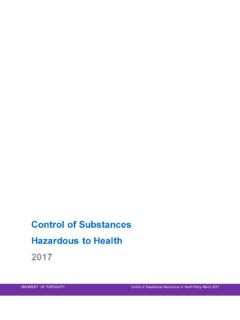Transcription of The Positive Discipline School
1 The Positive Discipline School Using solution focused Discipline to build a powerful learning community that models mutual respect and supports academic excellence. We learn best from those with whom we are in caring, mutually respectful relationships that promote independence. Such supportive relationships enable students from diverse backgrounds to feel comfortable bringing their personal experiences into the classroom, discover their common humanity and feel as though they are viewed as assets to the School community. Learning First Alliance Every Child Learning: Safe and Supportive Schools Terry Chadsey and Jody McVittie Certified Positive Discipline Associates Positive Discipline Association The Positive Discipline School August 2006 Terry Chadsey, MST and Jody McVittie, MD The Positive Discipline Association Certified Positive Discipline Associates 2We believe that schools have a critical choice to make in how we perceive and respond to student misbehavior.
2 When we follow familiar and traditional practice, we often act in ways that contradict our fundamental mission to engage each student in high levels of learning. Two Opposing Schools of Thought on Human Behavior Dominant and Traditional Practice in American Schools The Positive Discipline (Solution Focused) Approach Who developed the theory? Common practice Pavlov, Thorndike, Skinner Adler, Driekurs, Glasser, Nelsen, Lott, Dinkmeyer What motivates behavior? People respond to rewards and punishments in their environment. People seek a sense of belonging (connection) and significance (meaning) in their social context When do we have the most influence on the behavior of others? At the moment of response to a specific behavior.
3 In an ongoing relationship founded on mutual respect. What are the most powerful tools for adults? Control, rewards, and punishments Empathy, understanding the perspective of the student, collaborative problem solving, kind AND firm follow through Respect Obedience and compliance in relationships in which dignity and respect of the adult is primary Mutual, in relationships in which each person is equally worthy of dignity and respect Response to inappropriate behavior Censure, isolation, punishmentNaming without shaming and blaming, focus on solutions, follow through, addressing the belief behind the behavior Response to dangerous and destructive behavior Censure, isolation, punishmentClear follow through without getting in the way of the student experiencing the consequence of their action.
4 Student learning is maximized The adult has effective control over student behavior The student feels belonging and significance in the classroom The Positive Discipline School August 2006 Terry Chadsey, MST and Jody McVittie, MD The Positive Discipline Association Certified Positive Discipline Associates 3 Building effective learning communities requires respectful relationships at all levels School -wide Individual Classroom Now our community of students, teachers and parents work to act in a respectful manner for a more effective academic environment. We now have the knowledge and skills to interact with each other in a way to support one other, thereby achieving a win/win situation.
5 Before Positive Discipline at our School , respect was a word, now it is actions. --Elementary principal ( School population: 45% free/reduced lunch) In a Positive Discipline School , every 9 Understands that the quality of relationships and School climate are absolutely critical to successful student learning. 9 Seeks to establish strong meaning and connection for students, families and staff in social and academic contexts. 9 Implements principles of mutual respect and encouragement 9 Focuses on long term, solutions to misbehavior at individual, class and School wide levels. 9 Views mistakes as opportunities to learn and misbehavior as opportunities to practice critical life skills. 9 Questions the tradition of adult control, rewards and punishments.
6 Consistent systems and practices that promote relationships based on dignity and mutual respectFamilies & Community The Positive Discipline School August 2006 Terry Chadsey, MST and Jody McVittie, MD The Positive Discipline Association Certified Positive Discipline Associates 4In a Positive Discipline School , Systems Prevention, Early Intervention and Interventions LEVEL 3 When schools are thorough, systematic, and effective at the levels 3 and 4, students more quickly return to levels 1 and 2. When schools are thorough, systematic, and effective at levels 1 and 2, fewer student rise to higher levels of misbehavior. LEVEL 1 Prevention of misbehavior by: 9 building Positive emotional connections to School for every student and 9 engaging all students in learning and practicing problem solving and empathy Repeating and more serious misbehavior 7-10% of students LEVEL 4 Serious, chronic, and dangerous misbehavior 3-5% of students LEVEL 2 Low-level misbehavior 85 % of students The Positive Discipline School August 2006 Terry Chadsey, MST and Jody McVittie, MD The Positive Discipline Association Certified Positive Discipline Associates 5 Must Address Four Levels of Need.
7 For Moderate and Serious Misbehavior Research suggests that comprehensive approaches to School Discipline emphasize teaching appropriate behavior (not just punishing), matching the level of intervention to the level of behavioral challenge posed by each student, and designing integrated systems that deal with a full range of Discipline challenges. Learning First Alliance Every Child Learning: Safe and Supportive Schools Behavior Tools LEVEL 4 Chronic, dangerous, repeated, disruptive, unsolved --Team assessment and problem solving that includes family --Focus on building connection and encouragement. --Intensive academic support --Intensive social skills building --Respectfully and appropriately not interfering with students experiencing the consequences of their actions.
8 --Agreements and consistent follow through ..and more. LEVEL 3 Disruptive, hurtful, conflict generating --Intensive social skills building --Increased academic support --Problem solving to address belief behind the behavior --Agreements and consistent follow through --Non-punitive methods to make amends by contributing to the School --Classroom meetings ..and more LEVEL 2 Low level annoying and mildly disruptive --Seeing mistakes as opportunities to learn --Non-punitive responses to misbehavior --Effective School -wide practice for looking at system problems --classroom meetings ..and more LEVEL 1 Learning and practicing problem solving and social skills --Opportunities for meaningful learning and involvement of students.
9 -- School -wide focus on mutual respect and responsibility -- School -wide focus on academics and building social skills --Effective engagement of students in setting School and classroom guidelines --Classroom meetings ..and more. The Positive Discipline School August 2006 Terry Chadsey, MST and Jody McVittie, MD The Positive Discipline Association Certified Positive Discipline Associates 6A Successful Positive Discipline School STANDARD BEFORE implementationYear 1 The School recognizes that learning occurs when the School has a simultaneous focus on School climate and academic instruction. A focus on both academic achievement and Discipline / School climate are included in the first three School -wide goals. The School sets short term benchmarks for both academic achievement and Discipline / School climate.
10 Data is collected and progress assessed. Discipline policies and procedures: 9 are clear and well understood by all members of the School community. 9 focus on teaching skills rather than sorting and separating students. 9 are founded on respect and dignity. The School Discipline manual is reviewed and a process is established for ensuring consistency with the goals and principles of Positive Discipline . School Discipline practices are targeted to address 3 levels: a) Prevention and social skills instruction/practice for all students b) Early intervention and problem solving with clear follow through in all classrooms, lunchroom, playground, office, etc. c) Intervention of multi-disciplinary team problem solving and management for the smaller number of chronic, challenging behavior.






